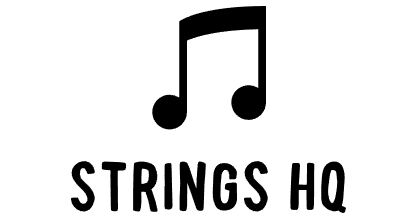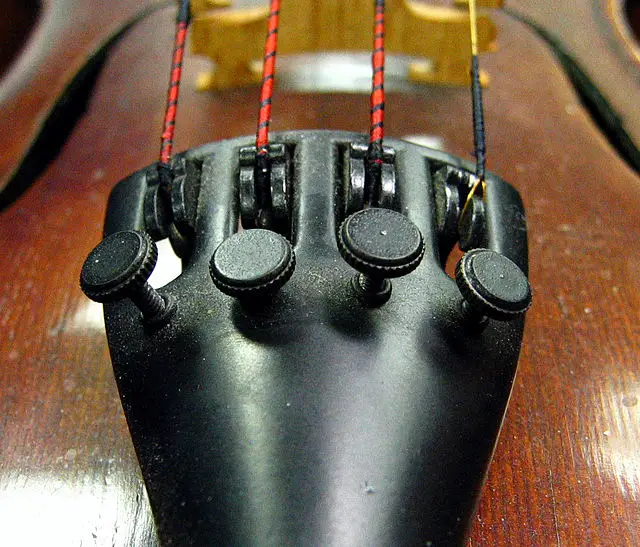A lot of people find it fascinating to dive into music theory, although no one denies how complicated things can get in that domain. In today’s article, our focus is on violins, concert pitch, and how this instrument relates to this musical concept.
Here’s everything you need to know about a violin and concert pitch:
Violins are Concert Pitch instruments because they sound like a C on the piano when they play a C. Instruments that don’t sound like a C, have to transpose. Other Concert Pitch instruments include all string instruments, trombones, and flutes. Trumpets and Clarinets sound a D when asked to play a C.
Table of Contents
What are Concert Pitch instruments?
Also known as non-transposing instruments, concert pitch instruments are instruments where the written pitch is the same as the concert pitch. Examples of these include the violin, cello, viola, flute, trombone, oboe, and bassoon, which all sound like a C when played in C.
Concert pitch refers to a universally agreed-upon standard pitch for tuning musical instruments, where the frequency of note A above middle C is 440 Hz. The need for concert pitch came about with the existence of transposing instruments, which caused all Cs to not sound the same.
Some instruments, however, transpose one octave higher or lower than their written pitch.
For example, the double bass sounds lower than its written pitch by one octave, while the piccolo sounds higher than its written pitch by one octave.
Unlike in an orchestra, if the director of a concert band asks the instruments to play in a C major scale, all string instruments (such as violins, cellos, violas, basses), as well as the trombones and flutes, will play a C. However, the trumpets and clarinets will play in D scale, the saxophones (alto) will play in A, and the French horns will play in G.
Other than that, Bb instruments such as the trumpet, clarinet, and tenor sax sound like a Bb in concert pitch; when they play their written Cs. Similarly, Eb instruments like Eb clarinets, the alto sax, and the bari sax sound like an Eb when they play their written Cs.

What keys can a Violin play In?
Technically speaking, a violin can play in any key. However, it can get very awkward and technical for violinists to play in keys that are far from C.
As such, an easy range for major keys is Ab to E, and for minor keys is F to C#. However, the majority of professional violinists would have no issue playing in any key.
Also, key signatures with a lot of flats or sharps demand more thought despite being simpler to finger.
How is a Violin tuned?
A Violin is tuned in 5ths, meaning the difference between each string is a fifth of an octave. Other string instruments tuned in 5ths include the Cello and Viola, whereas the Double-bass is tuned in 4ths.
The four strings on a Violin from lowest to highest are G, D, A, E.
● Step 1 — use a digital tuner (chromatic)


If you’re a beginner violinist, you should invest in a digital tuner to make sure that every string on your violin is precisely tuned to the right interval (typically, at 5th intervals).
Don’t worry though, you don’t have to use this device forever. As your violin skills advance, your ears will be more reliable when it comes to tuning, and you’ll shift to a more advanced tuning method known as “relative tuning”, which demands a more experienced ear.
● Step 2 — be patient and tune one string at a time
It takes time to get the tuning process time, and it progresses one string at a time starting from the A string then moving to D, G, and E. What you need to do is continuously bow the string while carefully listening with your ears until you reach the desired.
Even though you’re using a digital tuner, you should still do your best to listen as training for your ears to learn to recognize different pitches. With time, you’ll be so used to doing this that you’ll be able to master relative tuning.
As such, whenever someone plays the piano in A, or a pitch fork, or another properly-tuned instrument, you’ll be able to match your A string to the same tune, and from there, continue to tune the rest of the strings.
● Step 3 — rotate the tuning peg and fine tuners very gradually
At first, as well as when your instructor tunes your violin, you probably will only need slight tuning through the fine tuners. With seemingly minor changes in string tension, big things will happen, so only turn the tuners a tiny bit at a time if necessary, and play to hear what happened.
Granted, this may initially feel rather awkward, but that’s completely normal and expected. All violinists have been there and you’re going to get better and faster at doing it with time and practice.
If your violin is significantly out of tune that adjusting the tuning pegs becomes a must, rotate them very gradually. If you make dramatic turns in the wrong direction, you may end up modifying or damaging other parts of the instrument.
In the best-case scenario the bridge will shift from its place and/or a string will snap. At worst, the bridge may entirely snap the bridge or a tuning peg may break.
Check out this great tutorial on how to tune a Violin!
What key is a Violin in?
A Violin is tuned in natural notes i.e. the strings are not ‘sharp’ or ‘flat’. The only scale without any sharp or flat keys is C Major. The Violinist can therefore easily play a piece in C Major as all the finger positions will be natural.
However, a Violin can play music in any key signature.
The easiest way to determine the key of any song in violin -or any instrument for that matter- is via the song’s key signature. All you need to do is count the number of sharps or flats in the key signature and you could pinpoint what the song’s key is.
If the key signature you’re dealing with has no sharps or flats, then the violin is in C (or A minor). Here’s a simple guide to summarize key signatures and keys:
● For sharps, the method goes as follows —
| Number of # | The corresponding key |
| 0 | C |
| 1 | G |
| 2 | D |
| 3 | A |
| 4 | E |
| 5 | B |
| 6 | F# |
| 7 | C# |
● For flats, the method goes as follows —
| Number of Flats | The corresponding key |
| 0 | C |
| 1 | F |
| 2 | Bb |
| 3 | Eb |
| 4 | Ab |
| 5 | Db |
| 6 | Gb |
| 7 | Cb |
Why does it matter if a Violin is Concert Pitch?
When a violin is concert pitch, it’ll sound like a C on the piano when it plays in C. This means it doesn’t have to transpose.
Is a Violin a transposing instrument?
If you play the violin or you’re new to the concept of transposing instruments (for example, a Bb trumpet, a Bb clarinet, or a soprano saxophone), you may be confused about this notion and wondering what transposing instruments and where do violins fit into the equation.
Well, the good news is, transposition isn’t super tricky to understand. Basically, a transposing instrument possesses musical notes written at a different pitch from the actual concert pitch.
Instruments including the violin, piano, cello, flute, and viola are not transposing instruments. If a violinist sees the note C on the sheet, they’ll play a C and you’ll hear a C.
However, when other instruments such as clarinets, saxophones, and trumpets play the note C on the sheet, they don’t sound like a C. For example, a conventional clarinet is a Bb instrument whose notes are written higher than what the C sounds by one whole step. So when you play a C, a Bb is heard instead, which is one whole step (or two semitones) lower.
The reason that some musical instruments are transposing is to facilitate the switch between instruments belonging to the same family. The music parts for these instruments are transposed so that the same notes have the same fingering but sound a different pitch.
Can a Violin be tuned in other pitches?
Typically, the strings of the violin are tuned at perfect 5th intervals. The pitches are arranged as follows: G3, D4, A4, and E5, from the lowest to highest.
In classical music, it’s rare to hear alternate tunings during an event. However, in several styles of folk or country music, violinists tune their instruments in different pitches to avoid some very hard chord positions.
What other ways of tuning an instrument are there?
Besides using a chromatic, digital tuner to tune your violin, other methods to get the job done include:
● An online violin tuner
● Through youtube videos (search 440A)
● Using a violin tuner app
● Using another correctly-pitched violin
● Using a different properly-pitched instrument such as the oboe
● Using a tuning fork
Which clef is Violin written in?
Music for instruments that possess a high pitch such as the violin, clarinet, flute, or piccolo is written in the treble clef. On the other hand, music for instruments that possess a lower pitch such as the tuba, cello, or bassoon is written in the bass clef.
Some instruments, such as the viola or alto clarinet, lie in the middle and use the alto clef.
Wrap Up
So, are violins concert pitch? It should be pretty obvious by now that violins are indeed concert pitch instruments. When they play in a C, they sound like a C.
Other Examples of concert pitch instruments include the cello, viola, flute, trombone, oboe, and bassoon, which all sound like a C when played in C.
On the other hand, non-concert pitch instruments such as Bb instruments sound like a Bn in concert pitch (when played in the written Cs). Examples of such instruments include the trumpet, clarinet, and tenor sax.
There are also Eb instruments such as Eb clarinets, the alto sax, and the bari sax that sound like an Eb when they play their written Cs.

